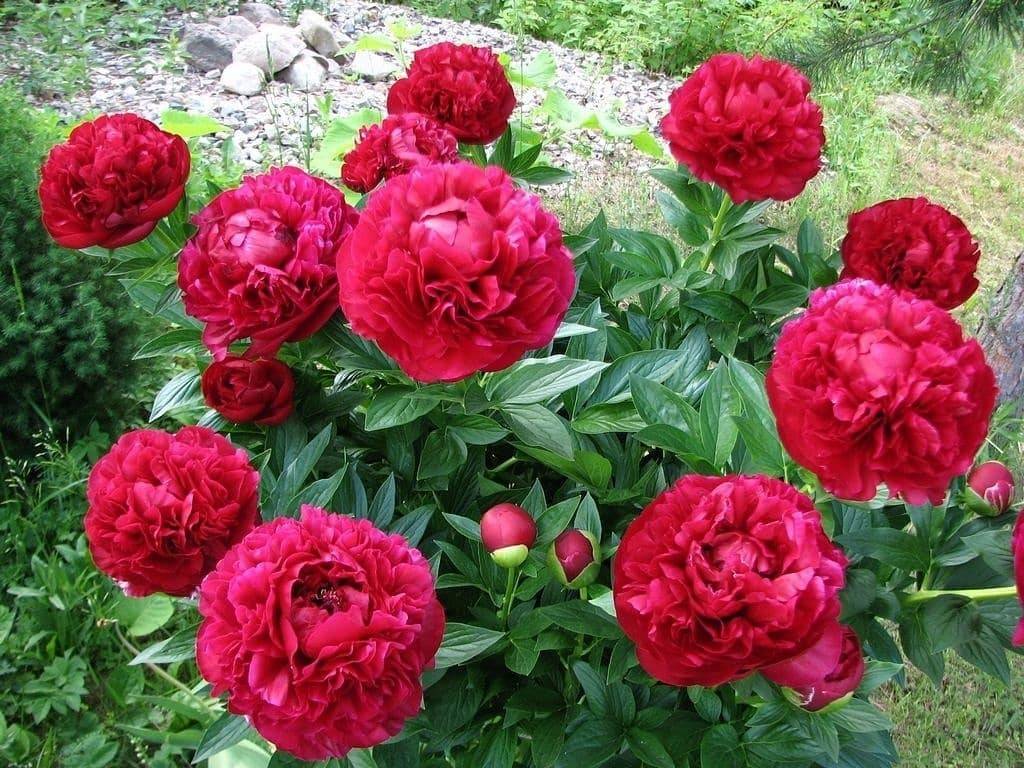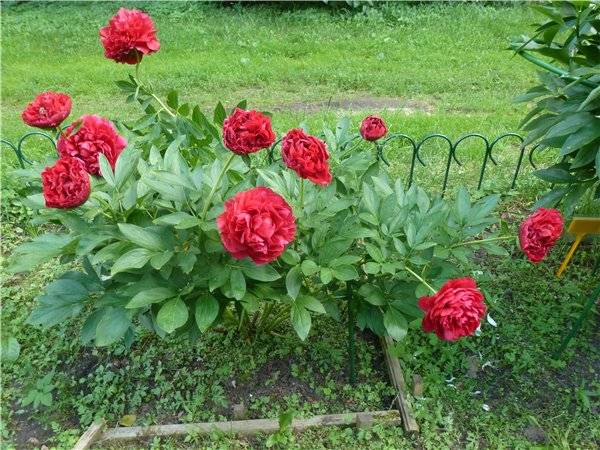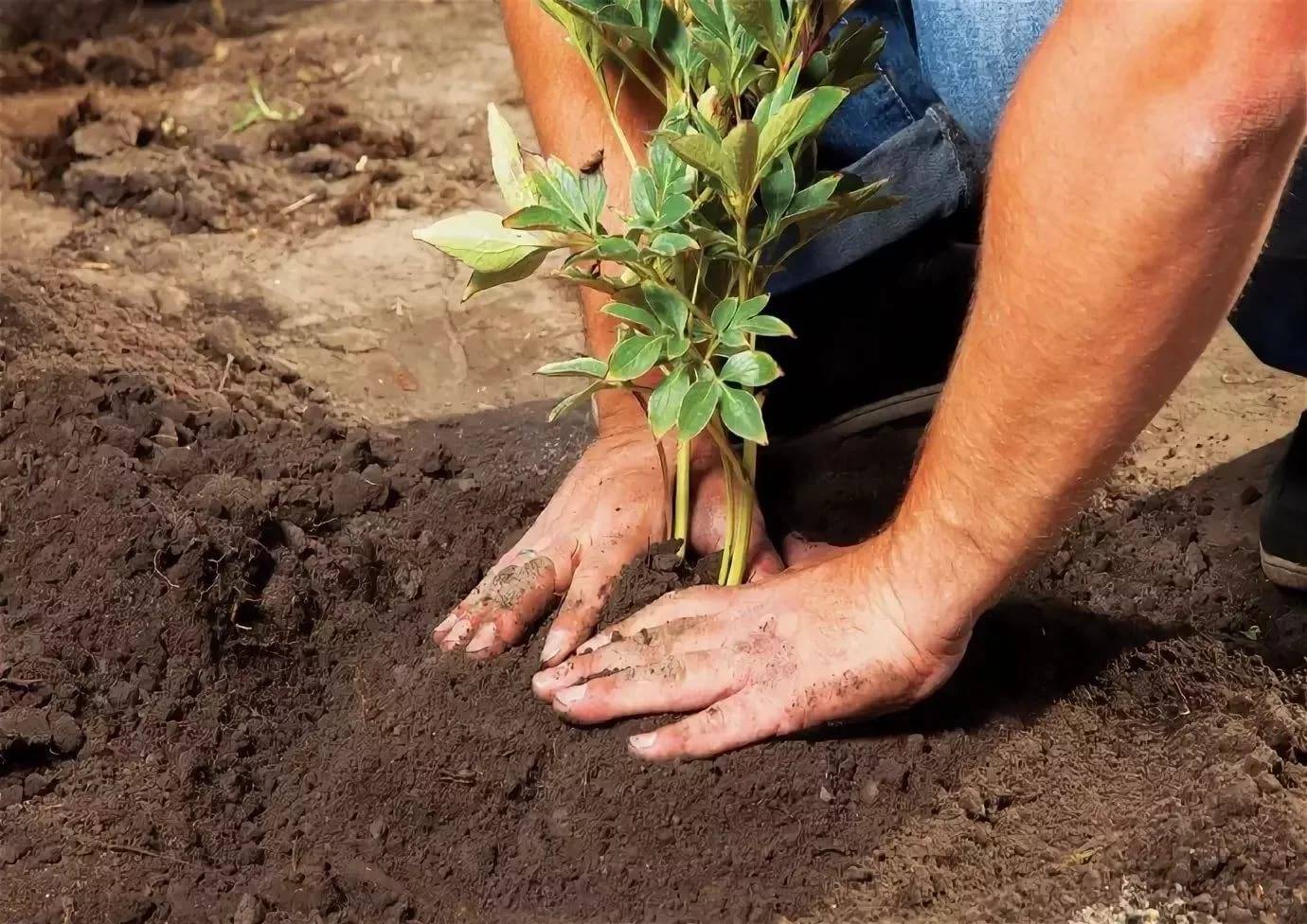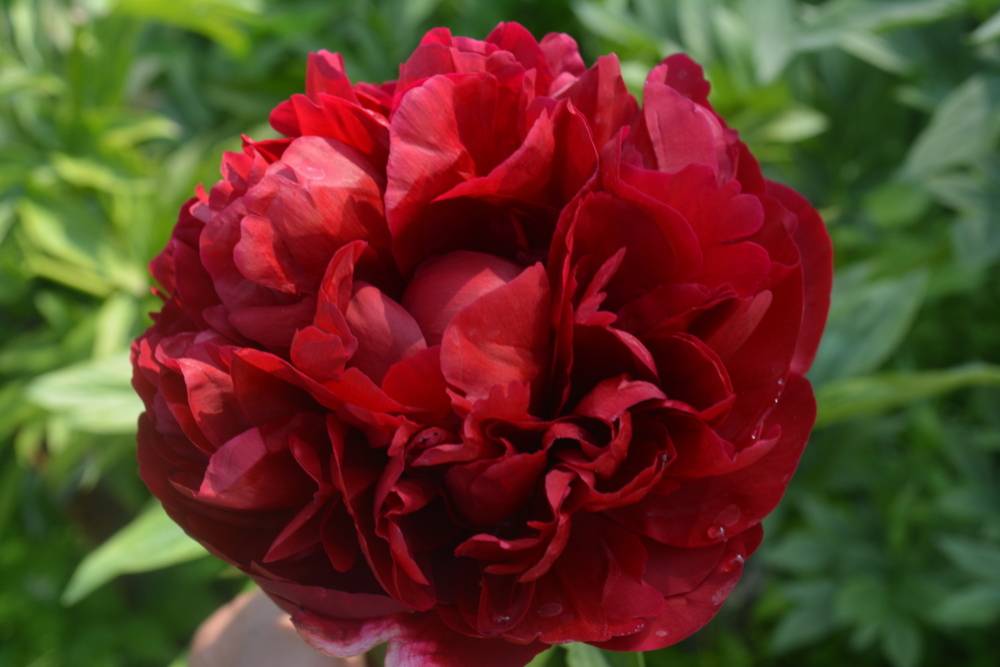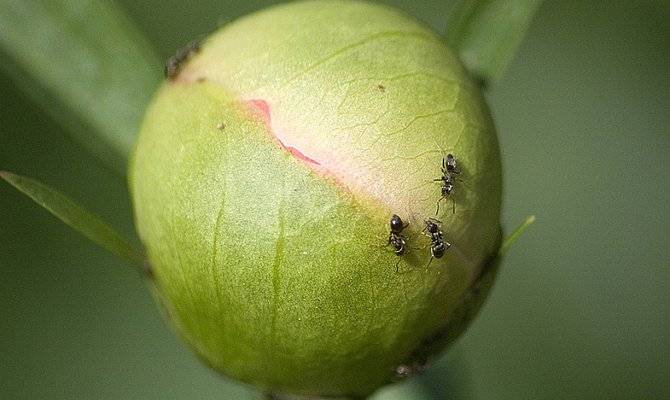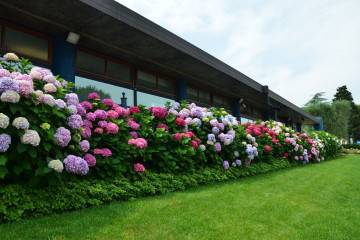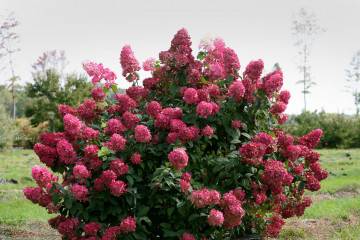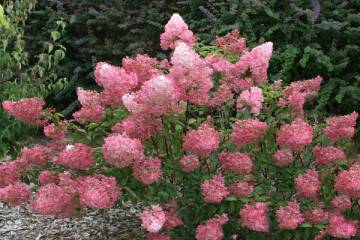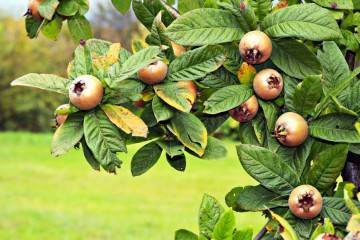Peony Henry Bockstoce - outdoor cultivation
Peony is a spectacular early flowering plant. Depending on the region of growth, the buds bloom in May or early June. Peony lacto-flowered Henry Bokstos is one of the most beautiful varieties of culture. Below is information about growing a plant in the local area.
What is this grade
Henry Bockstoce peony bred by Canadian experts. The interspecific hybrid immediately became desirable for many gardeners.
Description and characteristics
The bushes reach a height of 80-100 cm. The shoots are straight, buds develop at the top of each of them. The color of the double flowers is garnet red. In dissolution, the inflorescences reach a size of 20 cm. A delicate aroma emanates from them.
Under the influence of large flowers, the shoots will bend, so some gardeners use a garter. Peonies of this variety are frost-resistant and have good immunity.
Advantages and disadvantages of the variety
The positive qualities include the following characteristics:
- beautiful appearance;
- the ability to use for cutting;
- frost resistance;
- good immunity;
- drought resistance.
The disadvantages include lodging of shoots in strong winds.
Use in landscape design
Henri Peony is planted singly or in combination with other plants. Lush bushes next to evergreen conifers look beautiful. They are also planted near gazebos, in a flower bed, in a mixborder.
Compositions of peonies of different varieties look spectacular.
Growing a flower
For planting crops, a territory not blown by cold winds is selected. Bushes should be well lit by sunlight. Therefore, it is not recommended to plant them near tall trees, large buildings.
Planting by root cuttings
They choose a healthy bush, dig it out, carefully divide it into parts. Each fragment should consist of a root system and 2-3 renewal buds.
Important! Herbaceous peonies prefer to develop in neutral or slightly acidic soil.
What time is the boarding
Peonies are planted on the site in late summer or early autumn. In the flower shop, seedlings usually appear in February-March. In this case, you can plant the plants in spring.
How to prepare a flower and soil
If the roots of the peony are long, they are shortened to 10-15 cm. For disinfection, they are placed in a solution of potassium permanganate for an hour. In order for the peonies to take root faster, the root system is sprinkled with growth enhancer powder before planting.
The site is freed from debris, dug up. If the soil is heavy, clayey, black soil and sand are added to it. The soil should be loose, air and water permeable.
Planting procedure step by step
Peony Bokstos is planted as follows:
- Dig a hole 90 × 90 cm in size.
- A drainage layer is laid out on the bottom.
- Pour in the substrate.
- They spread the roots, cover them with soil.
- Compaction of the earth, watering.
It is necessary to pay attention so that the root collar is not buried. To preserve moisture in the soil, the bushes are mulched.
Planting with seeds (for breeding)
This method is not used by gardeners. It is time consuming and time consuming. During seed reproduction, all the maternal qualities declared in the description of the peony by Henry Boxtos are often not transmitted. It is used by breeders to develop new varieties.
Plant care
Caring for the bushes consists in watering, feeding, loosening the soil, mulching. Faded buds are cut off. To prevent the plants from being affected by diseases and pests, prophylactic spraying is performed.
Watering and feeding
The peony has thickened, moisture-storing roots. Therefore, frequent watering is not required. It is needed only during the budding and flowering period. Water for irrigation is used warm, settled.
For abundant flowering, peonies require feeding. Mineral fertilizer is applied in the spring. During the budding period and after flowering, the bushes are watered with a phosphorus-potassium composition.
Mulching and loosening
To prevent the appearance of a crust on the surface of the soil, the soil is loosened after irrigation. As a result, air and moisture can be more easily transported to the roots. At the same time, weeds that hinder the development of plants are removed.
To keep moisture in the soil, the trunk circle is mulched. To do this, use the bark of a fine fraction, dry grass, compost.
Preventive treatment
In adverse weather conditions, peonies can be affected by diseases and pests. To prevent the appearance of misfortunes, it is necessary to remove weeds, foliage from the root circle, and carry out preventive spraying. For this, insecticides are used three times per season.
Bloom
Peony Henry Bokstos blooms in the third year after planting. It is recommended to cut off the first buds: the bushes must first get stronger. The flowers of the peony are large, double garnet-red in color. The buds begin to open at the end of May. Flowering lasts 15-20 days.
When the buds begin to crumble, dry out, they are removed from the bush. This will make the plants look more decorative. It happens that the flowering of peonies does not come. This happens under the following circumstances:
- the bushes are planted in a shady, damp place;
- the root collar is too deep;
- an excess of nitrogen in the soil, which contributes to the growth of green mass, but prevents flowering;
- last year, immediately after flowering, the stems were cut at the root. In this case, future flower buds do not have time to lay down;
- plants are affected by diseases and pests.
Having corrected mistakes in care, the gardener will be able to admire the flowering of peonies for many years.
Post-flowering care
In order for peonies to please with flowering next year, you need to correctly perform agrotechnical techniques.
Transfer
The overgrown bushes of Henry Bockstoce paeonia are divided and transplanted. If this is not done, the buds will be smaller and weaker every year. The best time for the procedure is late August or early September. Separated plants are planted in a sunny place not blown by cold winds.
Pruning
The aerial part is cut off in late autumn after lodging of the shoots. The procedure is performed with a sharp, disinfected secateurs. Early pruning can harm the plant: the root system will not receive enough nutrients, which are transported by the shoots.
Preparing for winter
At the end of August, peonies are fed with a potassium-phosphorus mixture. In the fall, water-charging irrigation is carried out. Being in moist soil, the root system will tolerate frost more easily. For the winter, the bushes are mulched with peat or compost.
Diseases and pests
The culture has good immunity, but occasionally it can be affected by diseases and pests. This is due to mistakes in care or in unfavorable climatic conditions.
The most common diseases are rust, gray rot, ring mosaic. To prevent the appearance of pathogenic microorganisms, preventive measures are taken. Several times a season, the bushes are sprayed with fungicides.
Insects that harm peonies: ants, aphids, thrips. They get rid of them by spraying the bushes with soapy water. If there are too many pests, insecticides are used.
The peony of the Henry Bokstos variety is a beautiful, unpretentious plant. It is drought-resistant, winter-hardy, unpretentious in care. Having studied the information about growing a crop, then applying knowledge on his site, the gardener will be able to admire the pomegranate-red flowering of the bushes every spring.
